After years of growing their plants in garden soil and pots, many gardeners experimented with aquarium plants.
If you are wondering why you should add plants to your aquarium, here are some of the reasons:
- They add color and depth to the tank.
- They recycle the fish waste and use it as a source of nutrients which prevents algae growth.
- They can also consume other organic matter in the aquarium.
- They improve the quality of water by absorbing harmful elements like nitrates.
- They consume the CO2 produced by the fishes and release oxygen for them.
- They help in stabilizing the water pH.
But adding plants to your aquarium requires knowing what species are suitable and what are their growing requirements.
Here is a list of aquarium plants for beginners with the basic requirements of each of the plants.
Best Aquarium Plants for Beginners
- Amazon Sword
- Java Fern
- Marimo Moss Ball
- Java Moss
- Brazilian Micro Sword
- Cryptocoryne Wendtii
- Water Wisteria
- Bacopa Caroliniana
- Christmas Moss
- Vallisneria
Amazon Sword
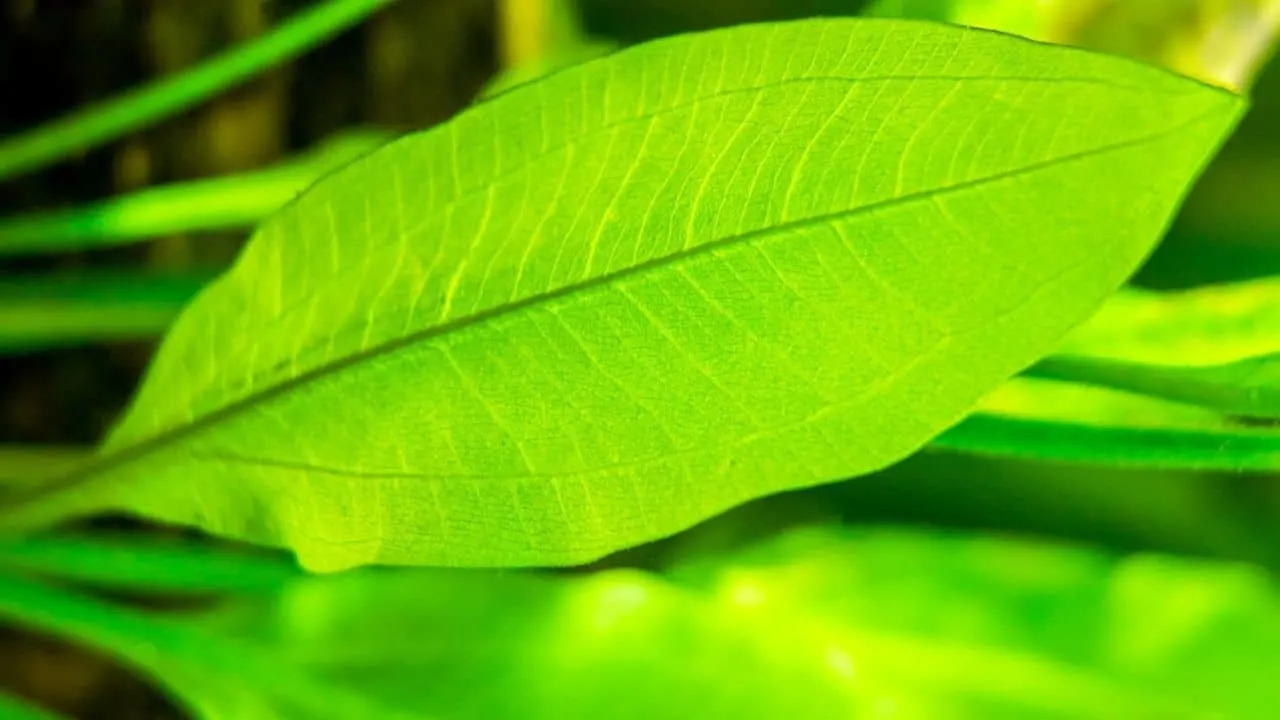
This is a full-size aquarium plant that fills your fish tank with loads of greenery and gives it a forest-like vibe.
Some varieties of the sword plant have narrow leaves, while others have broader ones. Just pick out the variety that you want best.
If you buy a sword plant grown without water, you’ll find that the leaves are round and big, but once it is put in the aquarium, it will dissolve in water to help the plant develop new leaves underwater.
This species needs plenty of plant fertilizer or root tabs to grow its large sword-shaped leaves. If you give it the right environment and nutrients, it can grow up to 20 inches (50 cm) in height.
- Light: Moderate (10 to 12 hours per day)
- Aquarium parameters: water pH between 6.5 to 7.5
- Temperature: 72 to 82 degrees Fahrenheit (22 to 27 degrees Celsius)
- Location: Background
- Difficulty: Easy
- Common issues: cracking, algae growth, and yellowing of leaves
- Other names: Echinodorus Grisebachii
Java Fern
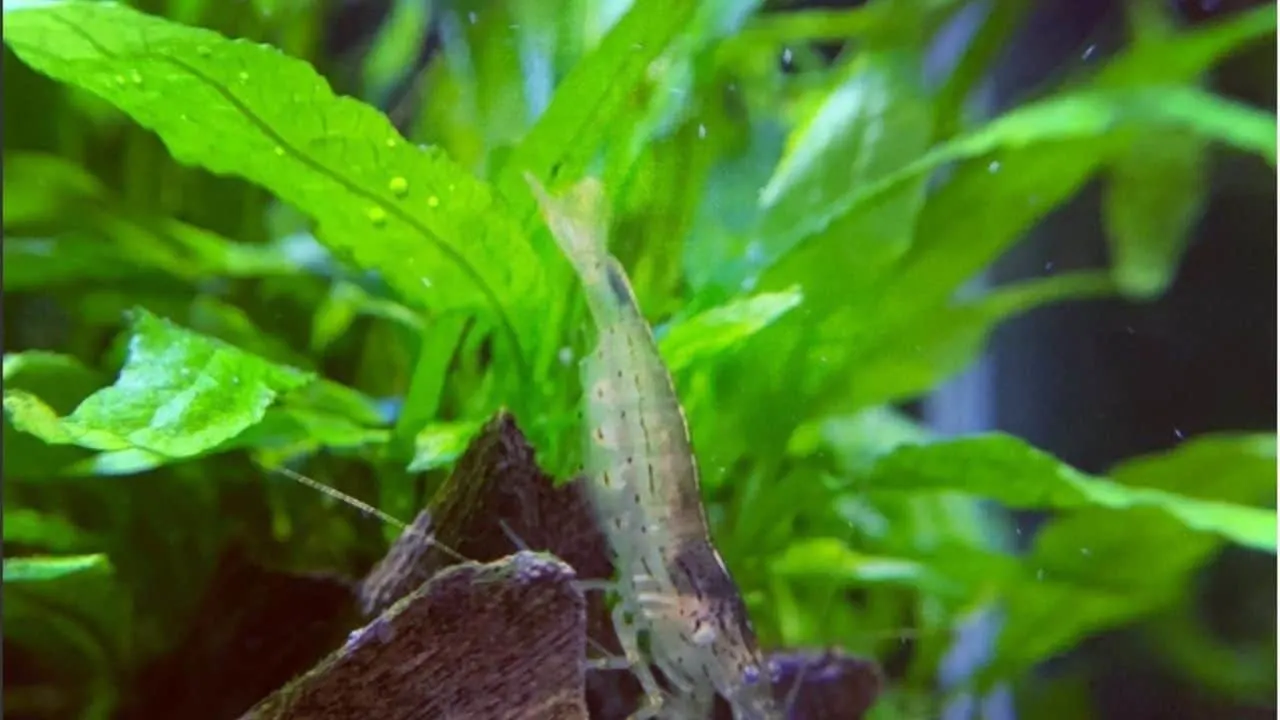
Photo Credit: @red_cherry_aquarium on Instagram!
The Java Fern belongs to the tropical islands of Malaysia, India, and Thailand. In any freshwater aquarium, the Java Fern’s a great addition.
The rhizome for Java Fern is not planted in a substrate, and you will have to supply essential nutrients into its water using liquid fertilizers.
You can secure the plant by attaching it to rocks or wood.
The most common varieties of Java Fern for aquarium are trident, narrow leaf, needle leaf, and lace. Make sure you do not confuse this plant with Java Moss.
Luckily, this easy-to-care plant is inexpensive, so it’s a perfect variety for those new to aquarium plants.
Once the tank environment is ideal, this plant has a low to moderate growth rate and reaches an optimum size of 13.5 inches.
- Light: Low or moderate
- Aquarium parameters: water pH between 6 to 7.5
- Temperature: 68 to 82 degrees Fahrenheit (16 to 27 degrees Celsius)
- Location: Middle or background
- Difficulty: Easy
- Common issues: brown spot and Java Fern melt
- Other names: Leptochilus Pteropus
Marimo Moss Ball
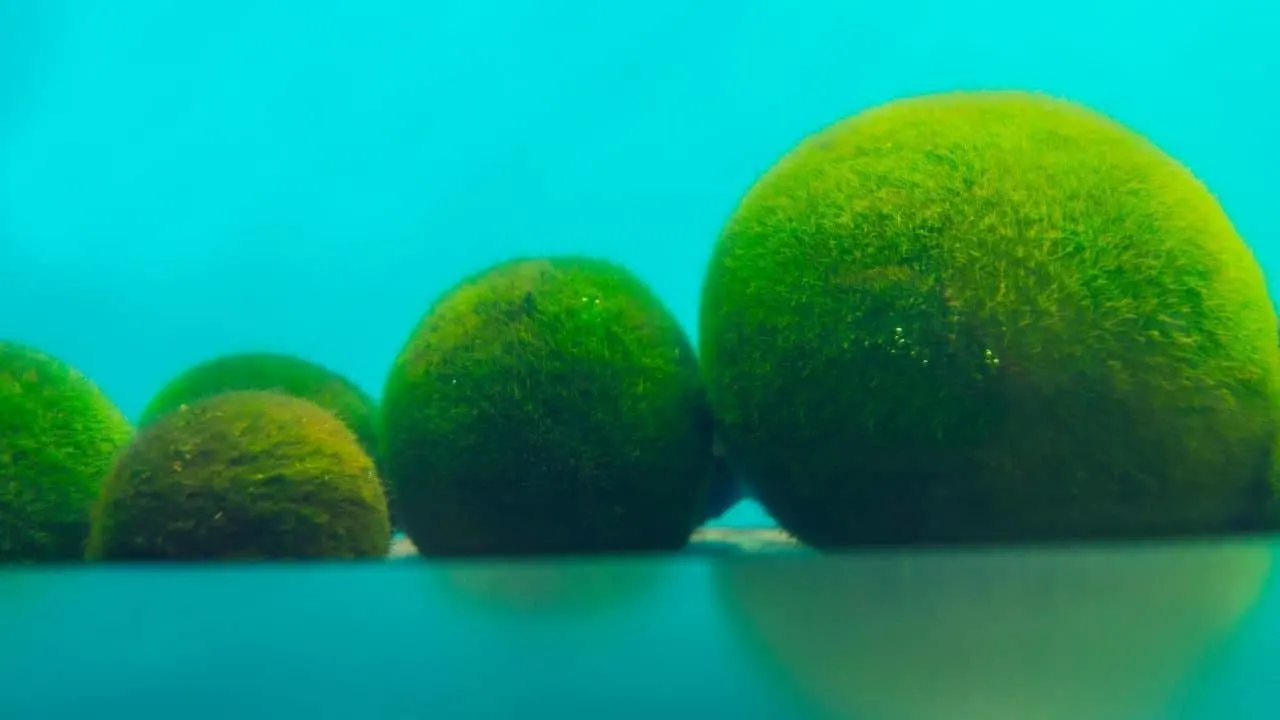
These velvety green seaweed balls are an interesting-looking plant.
Did you know that Marimo moss is actually an alga? Adding these fuzzy balls to your aquarium will provide natural water filtration.
They also contribute to the aesthetics with their minimalist appearance. They are native to cold regions, so they prefer the same climate inside a fish tank.
The low-maintenance Marimo moss balls will prevent the growth of algae. They can tolerate high salts and pH.
They can get as big as 12 inches in diameter in the perfect environment and last for 100 or more years. When grown inside an aquarium, these slow-growing plants (5mm growth per year) need a gravel-type substrate.
You have to keep changing the water and roll the balls every now and then to keep them in the best shape.
- Light: Low or moderate
- Aquarium parameters: water pH between 7.0 to 8.0
- Temperature: 43 to 76 degrees Fahrenheit (6 to 24 degrees Celsius)
- Location: Front or middle
- Difficulty: Easy
- Common issues: brown, black, or slimy balls
- Other names: Lake ball, Aegagropila Linnaei
Java Moss
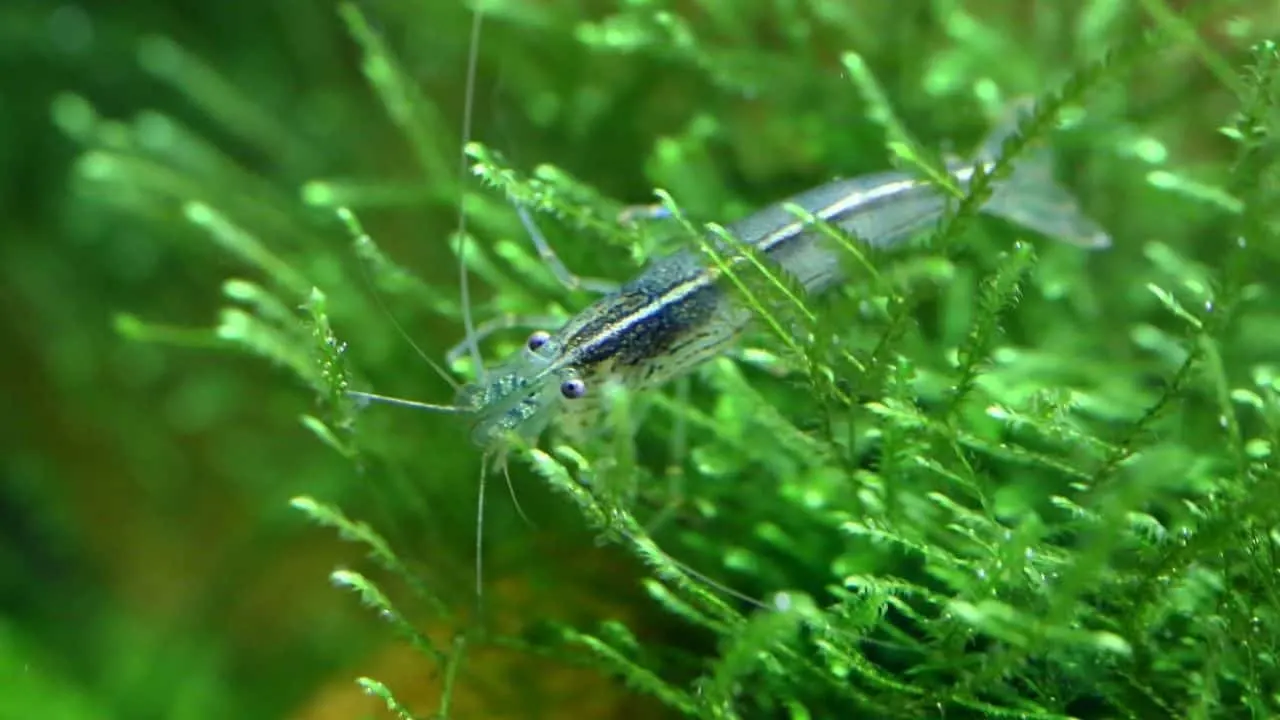
A native to Southeast Asia, there are two words to describe Java Moss: robust and easy. This fast-spreading plant requires regular trimming and is mostly grown as a mat or floating plant.
You can use Java moss to cover anything within the aquarium. You can even decorate the tank walls with this moss.
It requires soft acidic water for best growth and reaches an average size of 4 inches. Regularly changing the water and adding liquid fertilizers are essential for overall growth.
You can propagate the Java Moss using the division method and transfer it to other aquariums.
- Light: Low or bright
- Aquarium parameters: water pH between 6.5 to 7.5
- Temperature: 59 to 82 degrees Fahrenheit (15 to 27 degrees Celsius)
- Location: Front or middle
- Difficulty: Easy
- Common issues: algae growth
- Other names: Taxiphyllum Barbieri
Brazilian Micro Sword
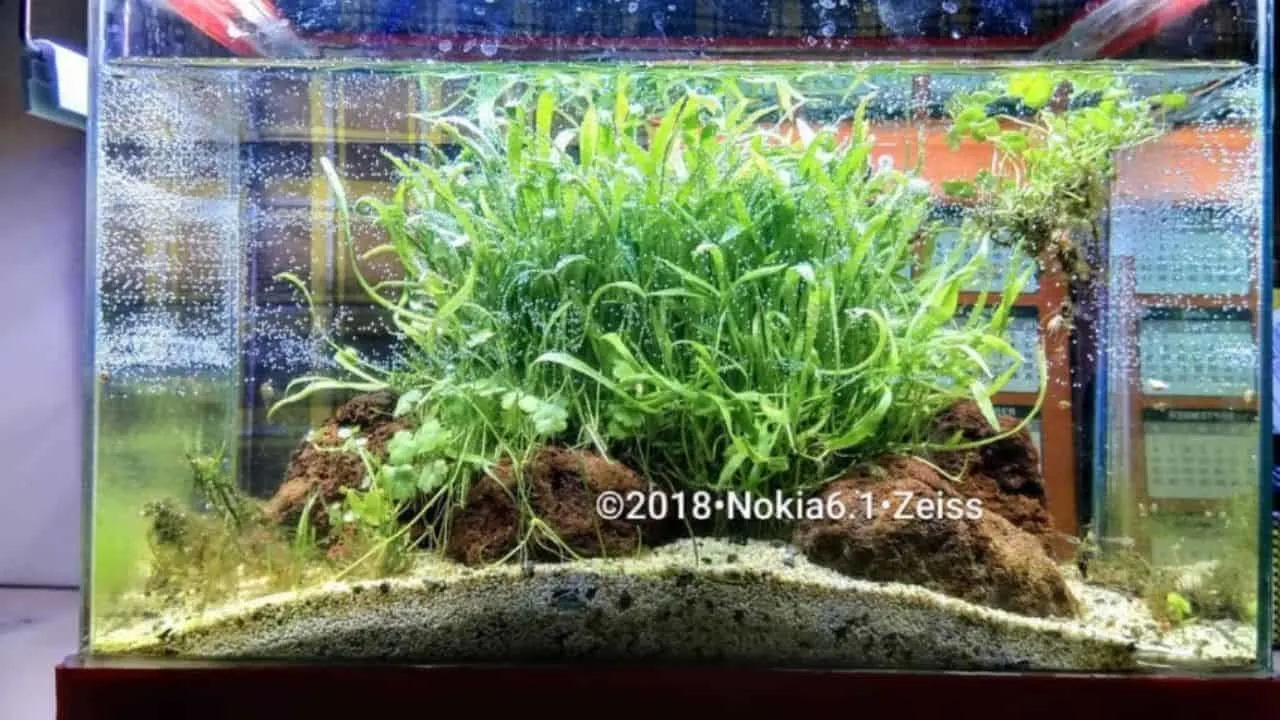
Photo Credit: @kopeelampoong on Instagram!
This tiny carpet plant is a perfect addition to any small-sized aquarium, with its maximum size of 3 inches (7.6 cm). You can keep it in tanks that can be as small as the 5-gallon size.
It’s native to South America but can be easily bought online or at a pet store. It comes in two striking colors, green and red, and resembles shiny, thick grass in appearance.
If you want a lawn type growth, keep it under bright light because it will grow in height in moderate or low light.
You also need to provide a substrate filled with nutrients since this plant relies on the soil for growth. The water should be moderately diluted so, make sure you add some fertilizer in liquid or tablet form.
- Light: Moderate or high
- Aquarium parameters: water pH between 5 to 7.5
- Temperature: 72 to 85 degrees Fahrenheit (22 to 29 degrees Celsius)
- Location: Front
- Difficulty: Moderate
- Common issues: Algae growth
- Other names: Lilaeopsis Brasiliensis, Carpet Grass
Cryptocoryne Wendtii
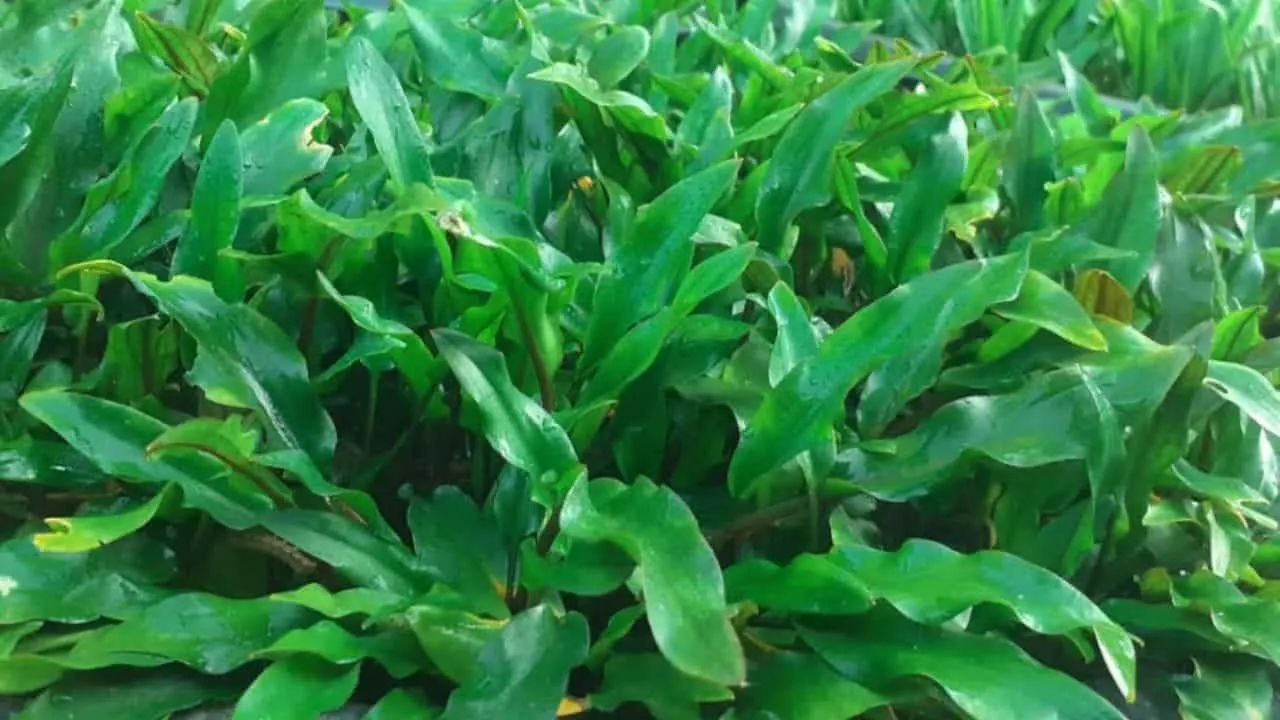
Photo Credit: @jual_ikan_jias_batulicin on Instagram!
This is another plant suitable for small or medium-sized aquariums as it has a maximum size of 4 to 6 inches (10 to 15 cm). It comes from the tropical islands of Sri Lanka.
The beautiful curly foliage of cryptocoryne wendtii has pointy tips and is available in green, brown, and red colors.
So choose whatever suits the aesthetics of your aquarium. The deep roots of this plant will prevent it from uprooting.
For large aquariums, we would recommend using it as a foreground plant. You can place it in the midground for medium-sized aquariums, and for small aquariums, it looks perfect as a background plant.
This plant grows best in hard water. It needs no extra care in terms of CO2 injections or fertilizers.
Make sure you give the plant some time to acclimate in its aquarium environment . To propagate the Wendtii plant, you just need some roots and a healthy node.
Bear in mind that this plant might melt the first time you place it in its new aquarium.
But do not lose hope because this is normal for such finicky varieties, and the plant will soon start showing signs of new growth.
- Light: Low or moderate
- Aquarium parameters: water pH between 6.0 to 8.0
- Temperature: 72 to 78 degrees Fahrenheit (22 to 25 degrees Celsius)
- Location: Front, middle, or background
- Difficulty: Moderate
- Common issues: Crypt melt
- Other names: Water Trumpet
Water Wisteria
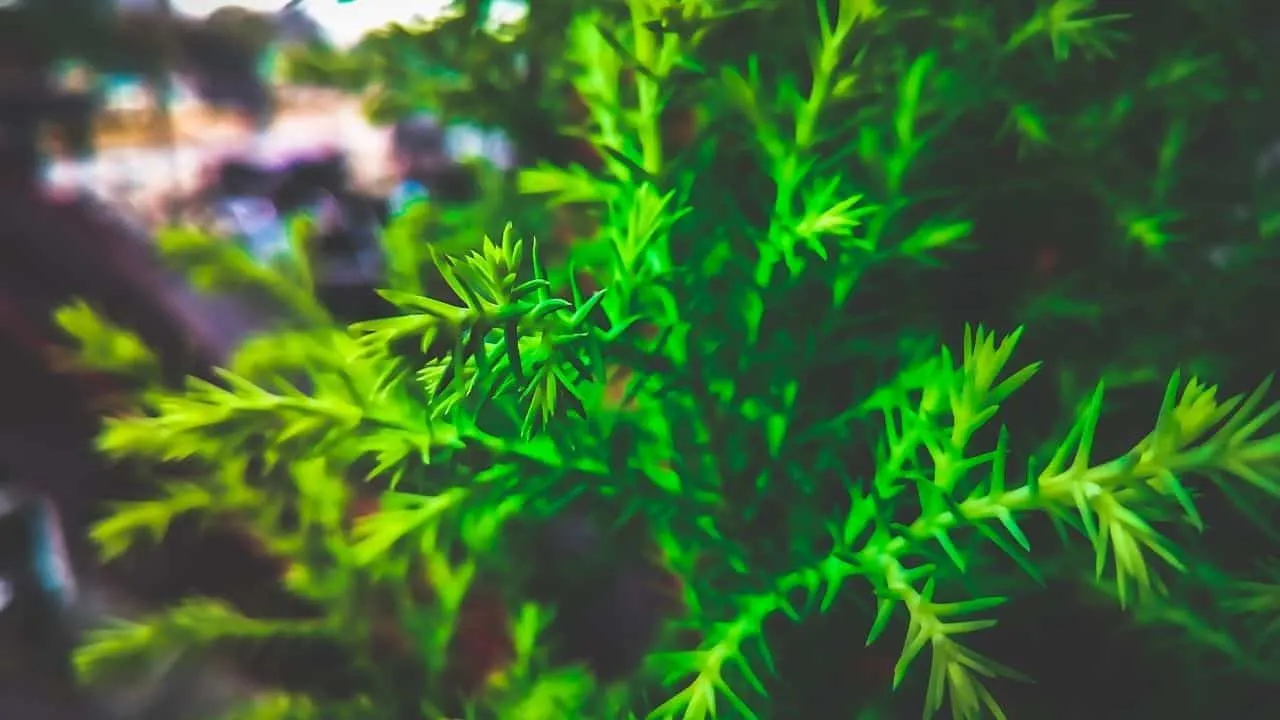
This low-maintenance aquarium plant can grow in a range of conditions.
It belongs to areas of India, Bangladesh, Nepal, and Bhutan and is a fast-growing plant that will reach a maximum height of 20 inches (50 cm). It has classic green leaves that can spread up to 10 inches (25cm).
This hardy aquarium plant is recommended for both experts and beginners. Propagation is carried out using cuttings or side shoots.
This plant can be grown vertically or horizontally, depending on the look you are trying to go for in the aquarium.
The first step in caring for this variety is to plant it the right way. Make sure you provide a good quality substrate as it helps in anchoring the plant via the roots.
The water hardness level should be between 3 to 8 KH.
- Light: Moderate or high
- Aquarium parameters: water pH between 6.5 to 7.5
- Temperature: 70 to 82 degrees Fahrenheit (21 to 27 degrees Celsius)
- Location: as carpet or background
- Difficulty: Easy
- Common issues: brown, yellow leaves and algae growth
- Other names: Hygrophila Difformis
Bacopa Caroliniana
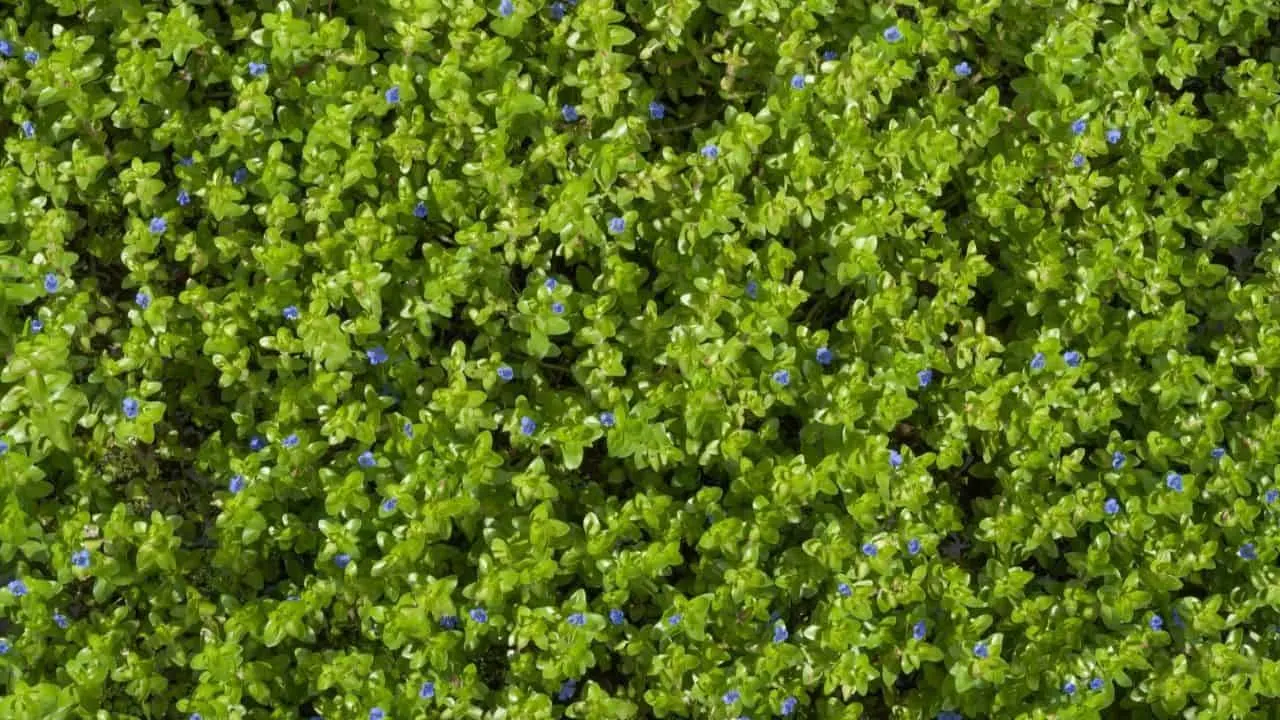
This American native has upright stems and round green leaves, making this aquarium plant different from others. The foliage is usually light green with a tint of yellow.
If you let the plant thrive, it can reach 10 inches (25 cm) of height.
However, this will take time because it has a slow growth rate. This means it does not require frequent maintenance for trimming or size control.
CO2 injections are optional, but this stem plant does require a good quality fertilizer for growth.
The color of the leaves will depend on the light you provide — high light results in pinkish-red leaves, whereas low light results in light green leaves.
Make sure other plants do not block the light if you are aiming for a bushy appearance.
The only precaution about this variety is to never dispose of it directly into local waterways.
- Light: Moderate
- Aquarium parameters: water pH between 5.0 to 8.0
- Temperature: 59 to 79 degrees Fahrenheit (15 to 26 degrees Celsius)
- Location: Middle
- Difficulty: Easy
- Common issues: plant melt or nutrient issues
- Other names: Baby’s Tears
Christmas Moss
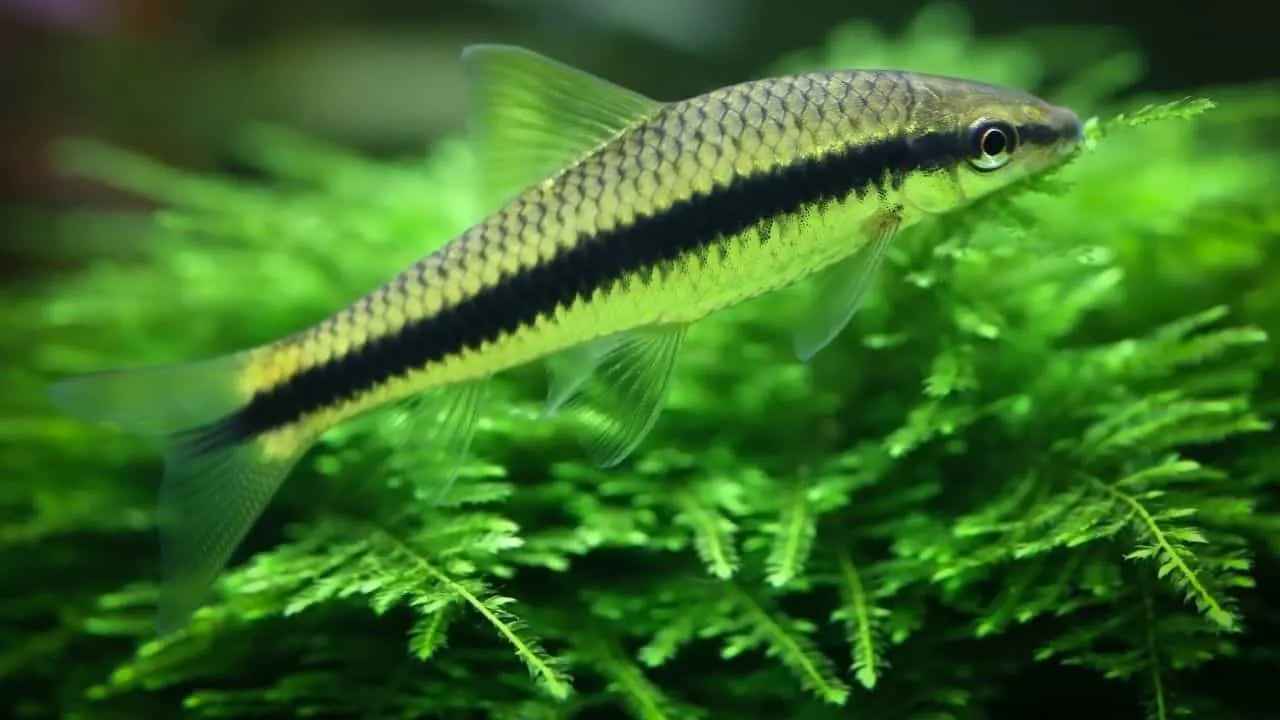
This plant is named after its foliage resembling the Christmas tree. This creeping plant will make a perfect mat of greenery on the aquarium floor as it adds color and texture.
It has an overall slow growth but once established, it spreads to cover a large area. You can propagate it using the division method.
It measures about 4 inches (10 cm) in height. With its shallow root system, this moss variety gets most of the nutrients from the water.
The dark green leaves are short and oval-shaped. They grow close to each other to create a dense mat-like appearance. Avoid growing the Christmas moss in salty or brackish water.
It originates from tropical regions of Asia, so it needs a similar growing environment in an aquarium. The light levels impact the growth, so keeping this moss under low light will result in slower growth.
Adding CO2 injections or fertilizers is not necessary for this moss variety. However, it does benefit the plant in one way or the other.
It’s important to maintain good water flow and ensure changing the water after every few days.
- Light: Moderate to high
- Aquarium parameters: water pH between 5.0 to 7.5
- Temperature: 65 to 77 degrees Fahrenheit (18 to 25 degrees Celsius)
- Location: Background or side
- Difficulty: Easy
- Common issues: Algae growth
- Other names: Vesicularia Montagnei, Xmas Moss, Brazilian Willow Moss
Vallisneria
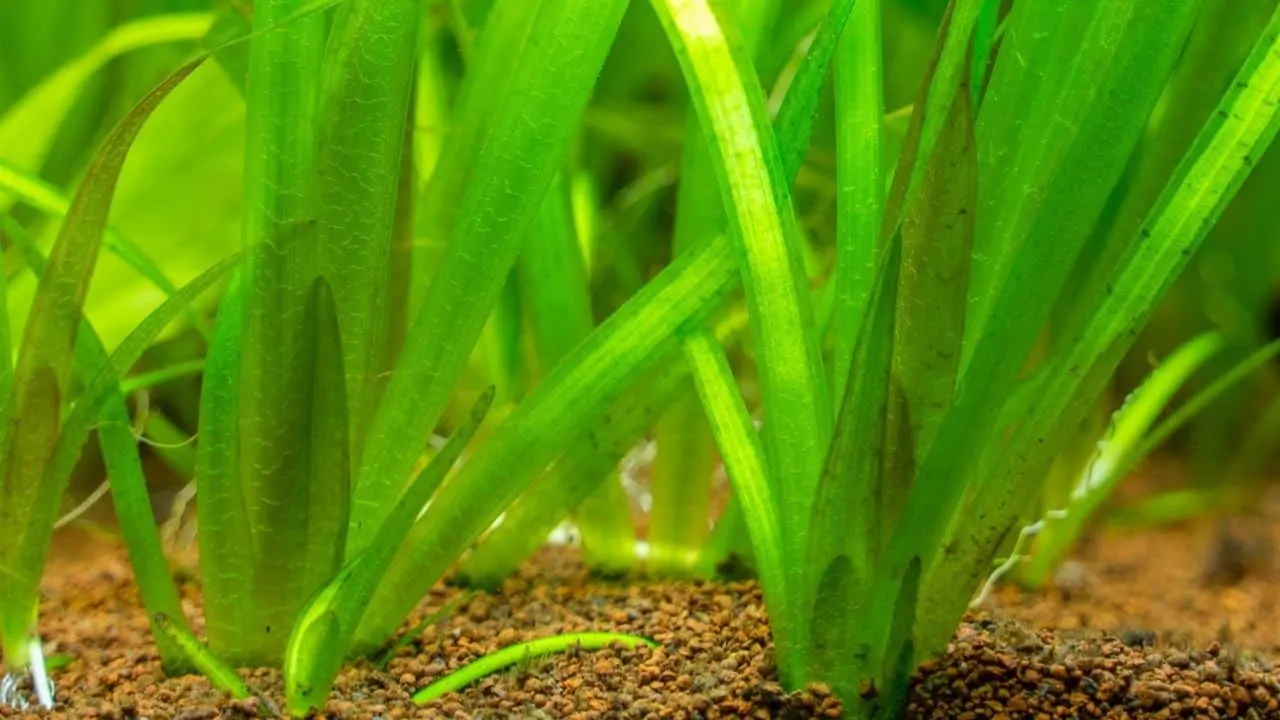
This eelgrass belongs to several regions in Europe, Asia, Africa, and North America. Therefore, it’s a common aquatic plant that grows in various varieties throughout the world.
This true aquarium plant will not survive outside water.
Inside the aquarium, avoid keeping them in too soft or acidic water as they do not appreciate extreme water conditions.
The roots should be submerged in the substrate, and the foliage should be floating in the water. This mysterious plant has interesting-looking leaves, depending on what variety you’re growing.
The long leaves look like ribbons in water.
These fast-growing beginner plants can be easily propagated using the runners.
The most common varieties for aquariums are Vallisneria Americana, Corkscrew Vallisneria, and Vallisneria nana,
- Light: Moderate
- Aquarium parameters: water pH between 6.5 to 8.0
- Temperature: 68 to 82 degrees Fahrenheit (20 to 28 degrees Celsius)
- Location: Background
- Difficulty: Easy
- Common issues: Red coloration of leaving, plant melt, and rotting
- Other names: Tape grass, Wild-celery
Conclusion
We hope that all the beginner aquarium plants on this list make your aqua gardening journey exciting.
If you follow the basic instructions about each plant, they are easy to grow and maintain within any aquarium.
If you find this article useful, read about cleaning aquarium plants before planting.

Daniel has been a plant enthusiast for over 20 years. He owns hundreds of houseplants and prepares for the chili growing seasons yearly with great anticipation. His favorite plants are plant species in the Araceae family, such as Monstera, Philodendron, and Anthurium. He also loves gardening and is growing hot peppers, tomatoes, and many more vegetables.


